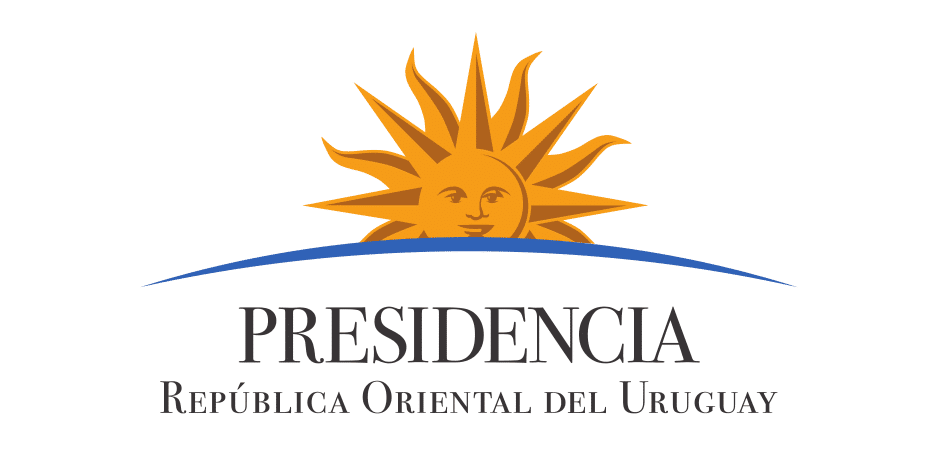The First FIFA World Cup, 1930
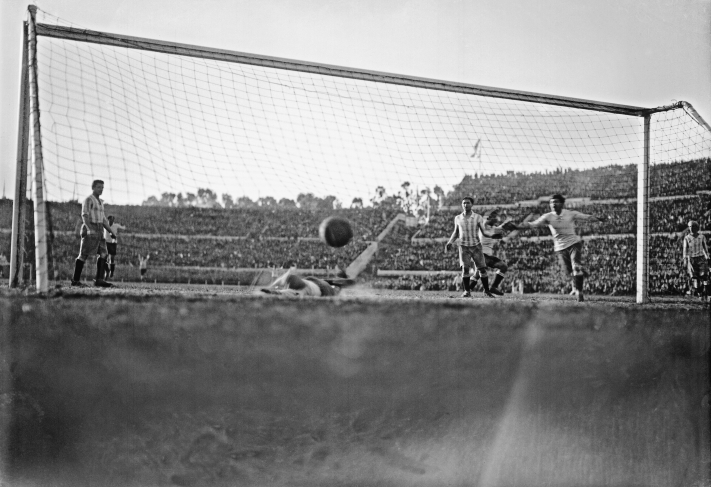
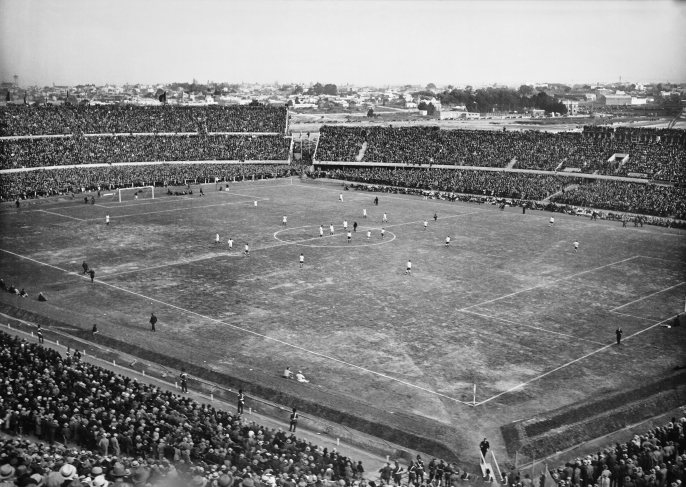
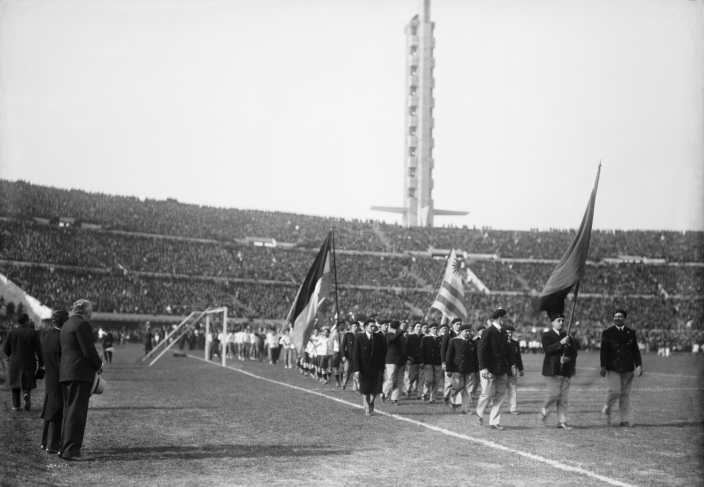
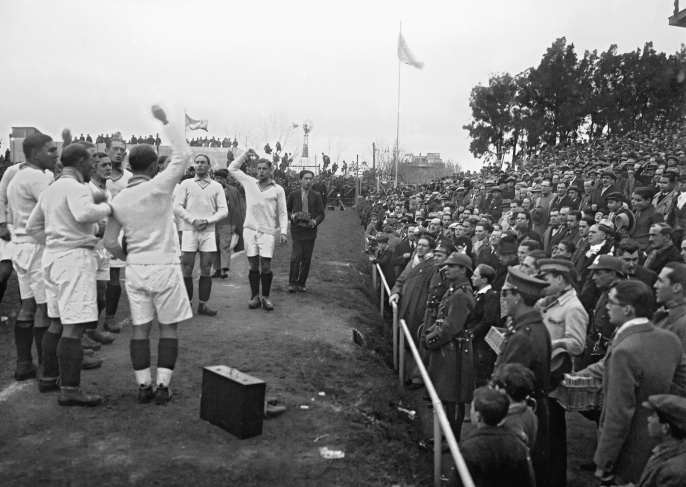

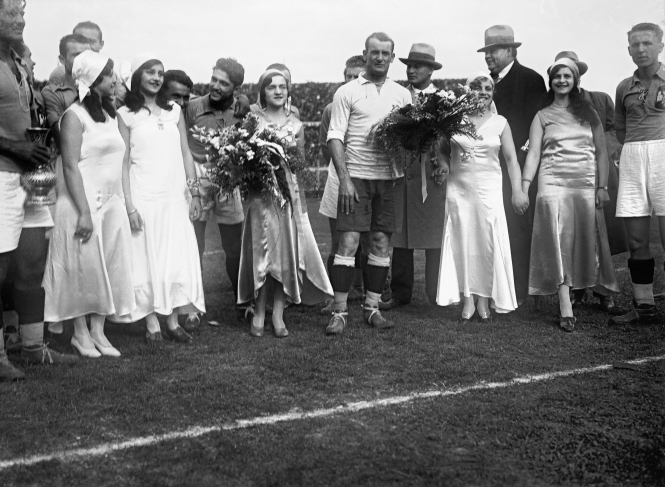
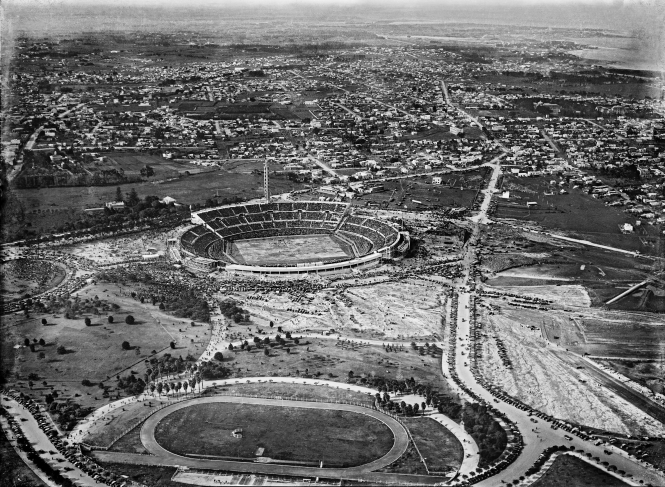
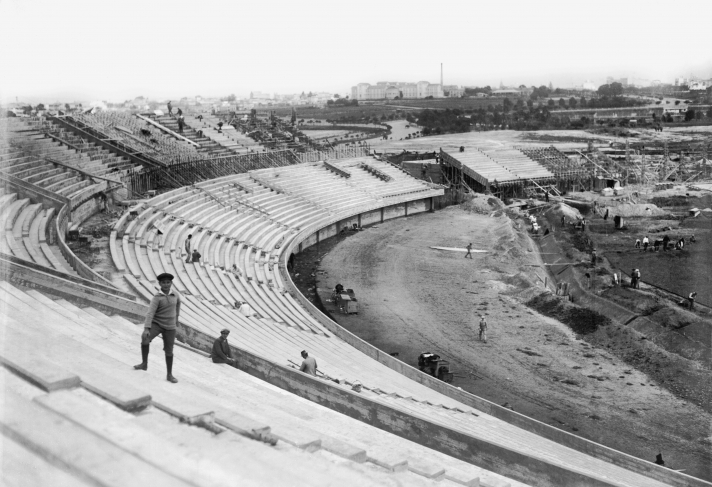
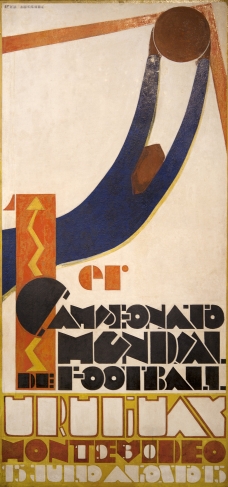
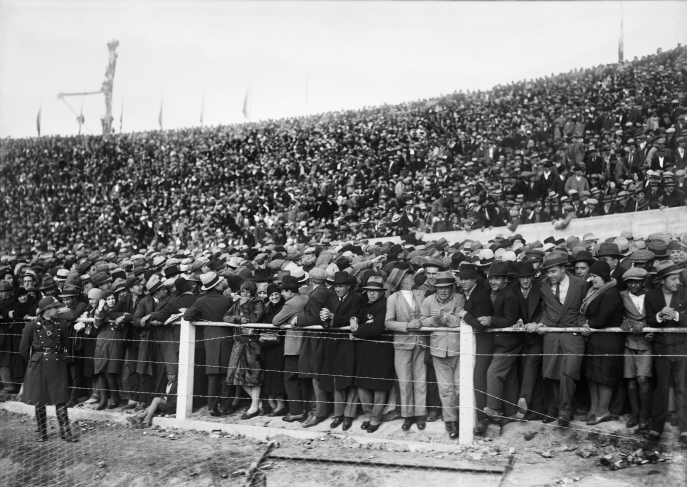
Fourth Uruguayan goal, scored by Héctor Castro right before the very end of the final game between Uruguay and Argentina. First Football World Cup. Centenario Stadium. July 30th, 1930. Image:
Match between Uruguay and Peru, the opening day of the Centenario Stadium. Front left: Olímpica stand; front right: Colombes stand. Back left: Ámsterdam stand; back right: América stand. July 18th, 1930.
Inaugural ceremony of the Centenario Stadium. Delegations parade. At the rear end, the “Olímpica” stand and the “Homage Tower.” July 18th, 1930.
The French team at the “Parque Central.” The fourth player starting from the left is Lucien Laurent, the one who scored the first goal of the first Football World Cup ever organised. July 13th, 1930.
The Uruguayan team before playing the final game of the World Cup against Argentina. At the back row, E. Figoli (masseuse), A. Gestido, J. Nasazzi, E. Ballesteros, E. Mascheroni, J.L. Andrade, L. Fernandez, L. Grecco (masseuse). At the front, P. Dorado, H. Scarone, H. Castro, P. Cea, S. Uriarte. Centenario Stadium. July 30th, 1930.
Just before the beginning of the semi-final between Uruguay and Yugoslavia, five pupils of the “Instituto Nacional de Señoritas” (Young Ladies’ Finishing School) wearing dresses bearing the colours of the national flag- a golden one, two white ones and two blue ones- give bouquets to the captains of the respective teams, José Nasazzi and Milutin Yokovitch. Centenario Stadium. July 27th, 1930.
Aerial view of the Centenario Stadium and its surroundings, the day of the final of the first Football World Cup. July 30th, 1930.
Construction of the slope and the “Amsterdam” stand. Centenario Stadium. Back section, “Pereira Rossell” children’s hospital . February – July 1930 (Approx.).
Original sketch of the poster that promoted the World Cup, with which Guillermo Laborde won the first prize in the poster’s contest organised by C.A.F.O. This item is kept at Montevideo’s Football Museum.
Spectators at the slope and at the “Ámsterdam” stand, during a game between Uruguay and Peru the day of the opening of the Centenario Stadium.
Moscow, 22.06.2018—29.07.2018
exhibition is over
Share with friends
For the press
The First FIFA World Cup, 1930
Project presented by the Center of Photography of Montevideo
This year Russia is hosting the FIFA World Cup. To accompany the most important sporting event of the year, the Multimedia Art Museum, Moscow recalls how the first-ever World Cup championship was held in Uruguay.
The exhibit includes photographs, posters, invitations and football attributes from the collection of the Montevideo Municipal Centre of Photography, and the Museum of Football in Montevideo.
At the 1928 congress of the International Football Federation (FIFA) in Amsterdam it was decided to stage football championships every four years, beginning in 1930. Uruguay was selected as the most suitable venue for the championship, since they had won the most football trophies and were also celebrating the centennial of their first Constitution in 1930. Several European member-countries of FIFA who were undergoing a protracted economic crisis in the 1930s expressed displeasure at the choice of Montevideo as capital for the championship, since for them sending teams to another continent seemed very expensive and inconvenient. Nevertheless thirteen national teams accepted the challenge: nine representatives of the American continent (Argentina, Bolivia, Brazil, Chile, Mexico, Paraguay, Peru, Uruguay and the USA) and four European teams (Belgium, France, Romania and Yugoslavia).
FIFA rules stipulated that the country organising the championship should cover the expenses of all the delegations and also build a stadium that met all the requirements of the world tournament.
Construction of the Estadio Centenario was assigned to the architect Juan Antonio Scasso, director of the city hall’s open spaces and parks department, and to José Domano, a student at the faculty of architecture. A site in the Parque José Batlle y Ordóñez was chosen for construction of the stadium. More than one thousand workers laboured round the clock for ten months to construct the stadium. The speed of construction work was greatly admired both inside and outside the country, as well as the modern design of the new stadium, which marked an important milestone for the modernisation of public space in Montevideo. Jules Rimet, FIFA president at the time, congratulated Uruguay on the creation of what was then the largest stadium in the world dedicated solely to football.
When the first World Cup match began in Montevideo on 13 July 1930 the stadium was not yet complete.
The game between France and Mexico was held on the Pocitos field, which then belonged to the Peñarol Club. On the same day teams from the USA and Belgium met on the football field of the Parque Central. The first eight matches of the World Cup were played on these pitches.The championship lasted eighteen days and in that period eighteen games took place, attended by more than four hundred thousand spectators. The first game held at the new Centenario stadium was between the national teams of Uruguay and Peru. Newsreels record the disappointment felt by many thousands of spectators at the performance of the Uruguayan team, which won its first match at the World Cup but provided a rather lacklustre game.
At the time radio broadcasts of football matches were still an innovation to which the public was not yet accustomed. Hence the official Uruguayan radio broadcasting service took the initiative to distribute posters and leaflets with a plan of the Estadio Centenario divided into squares, this serving as a code to give the listeners a better idea of what happened on the pitch.The final match between the national teams of Uruguay and Argentina was played on the evening of July 30th. Although the Argentinian team were uppermost at the end of the first half with a score of 2–1, the Uruguayans managed to equalize and then win the match and the championship with a final score of 4–2. Celebration of the victory continued for several days, and a national holiday was declared for the day after their triumph, 31 July 1930.
Now, 90 years after these events, the MAMM exhibition relives one of the most important moments in the history of sport, allowing us to see the history of football from a fresh perspective.



